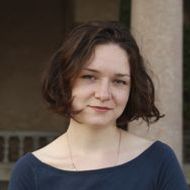HSE Researchers Uncover Causes of Gender Pay Gap among Recent University Graduates in Russia

A study conducted at HSE University shows that despite having the same education and similar starting conditions, the pay gap between male and female recent graduates can be as high as 22%. This is partly because female students often choose less lucrative fields and also because they tend to seek jobs in sectors that offer lower pay but are perceived to have more stable and safer working conditions.
The study included more than 400,000 early-career professionals and was based on data from the nationwide Monitoring Graduate Employment database, which contains details on graduates' education and subsequent employment. The study focuses on 2021 graduates and examines their career outcomes in 2022. The authors emphasise that this is not survey data, but an administrative dataset encompassing all graduates in the country.
The researchers found that women with the same educational characteristics earn 22% less than their male counterparts a year and a half after graduation. 'This disparity is not related to their abilities but rather to systemic factors,' according to Natalya Yemelina, co-author of the study and Senior Research Fellow at the Laboratory for Labour Market Studies of the HSE Faculty of Economic Sciences.
One of these systemic factors is that many young women still predominantly choose 'female' fields of study in the humanities and social sciences, as well as careers in education and medicine, where salaries are traditionally lower than those in engineering or IT, which are more commonly chosen by men.
Thus, over 50% of male graduates have studied engineering and technology, while nearly half of female graduates have chosen economics, law, and social sciences, where the starting salaries for graduates are, on average, 30% lower than in technology-related occupations.
'Although an increasing number of women have been choosing technology-related fields in recent years, a significant portion still prefers areas where salaries are lower. This affects their starting employment and earnings,' according to Ksenia Rozhkova, co-author of the article and Junior Research Fellow at the Laboratory for Labour Market Studies of the Faculty of Economic Sciences.
Such educational segregation accounts for one-third of the explained pay gap. Job characteristics such as industry, field of occupation, and company size appear to play a more significant role. Male graduates are more likely to secure jobs in high-paying industries such as mining and IT, where salaries in 2022 exceeded 80,000 roubles per month. In contrast, women tend to focus on sectors with lower earnings, such as education, healthcare, and administration, where salaries rarely exceed 50,000 roubles.
Another notable finding concerns the role of academic achievement. Women are more likely than men to graduate with honours, reflecting a high level of training attained. However, this does not necessarily result in tangible benefits. While graduating with honours increases employability, it does not guarantee women the same high salaries as their male counterparts.

The reasons for this gap may be linked to unobservable factors such as differences in working hours, career interruptions due to family obligations, and potential discrimination by employers.
In another article, the authors provide an even more detailed analysis, for the first time evaluating the dynamics of early-career gender inequality based on data from 2018 graduates. Despite the absence of family obligations or significant differences in work experience between men and women, a gender pay gap of 14% is observed in the first six months of their entry into the labour market. Within four years of graduation, the pay gap nearly doubles. While initially, right after graduation, 85% of the pay gap can be attributed to objective differences in education and work characteristics, a few years later, most of the gap remains unexplained. The largest gap is observed among the highest-paid professionals, indicating the presence of a glass ceiling effect from the very start of graduates' careers in the Russian labour market.
'The rapidly expanding early-career gender pay gap indicates that education policies may have limited ability to effectively address gender inequality in the labour market. The expectation that the pay gap can be minimised solely by reducing educational segregation is unfounded,' according to Sergey Roshchin, co-author of the study and Head of the Laboratory for Labour Market Studies at the HSE Faculty of Economic Sciences.
See also:
Larger Groups of Students Use AI More Effectively in Learning
Researchers at the Institute of Education and the Faculty of Economic Sciences at HSE University have studied what factors determine the success of student group projects when they are completed with the help of artificial intelligence (AI). Their findings suggest that, in addition to the knowledge level of the team members, the size of the group also plays a significant role—the larger it is, the more efficient the process becomes. The study was published in Innovations in Education and Teaching International.
New Models for Studying Diseases: From Petri Dishes to Organs-on-a-Chip
Biologists from HSE University, in collaboration with researchers from the Kulakov National Medical Research Centre for Obstetrics, Gynecology, and Perinatology, have used advanced microfluidic technologies to study preeclampsia—one of the most dangerous pregnancy complications, posing serious risks to the life and health of both mother and child. In a paper published in BioChip Journal, the researchers review modern cellular models—including advanced placenta-on-a-chip technologies—that offer deeper insights into the mechanisms of the disorder and support the development of effective treatments.
Using Two Cryptocurrencies Enhances Volatility Forecasting
Researchers from the HSE Faculty of Economic Sciences have found that Bitcoin price volatility can be effectively predicted using Ethereum, the second-most popular cryptocurrency. Incorporating Ethereum into a predictive model reduces the forecast error to 23%, outperforming neural networks and other complex algorithms. The article has been published in Applied Econometrics.
Administrative Staff Are Crucial to University Efficiency—But Only in Teaching-Oriented Institutions
An international team of researchers, including scholars from HSE University, has analysed how the number of non-academic staff affects a university’s performance. The study found that the outcome depends on the institution’s profile: in research universities, the share of administrative and support staff has no effect on efficiency, whereas in teaching-oriented universities, there is a positive correlation. The findings have been published in Applied Economics.
Physicists at HSE University Reveal How Vortices Behave in Two-Dimensional Turbulence
Researchers from the Landau Institute for Theoretical Physics of the Russian Academy of Sciences and the HSE University's Faculty of Physics have discovered how external forces affect the behaviour of turbulent flows. The scientists showed that even a small external torque can stabilise the system and extend the lifetime of large vortices. These findings may improve the accuracy of models of atmospheric and oceanic circulation. The paper has been published in Physics of Fluids.
Solvent Instead of Toxic Reagents: Chemists Develop Environmentally Friendly Method for Synthesising Aniline Derivatives
An international team of researchers, including chemists from HSE University and the A.N. Nesmeyanov Institute of Organoelement Compounds of the Russian Academy of Sciences (INEOS RAS), has developed a new method for synthesising aniline derivatives—compounds widely used in the production of medicines, dyes, and electronic materials. Instead of relying on toxic and expensive reagents, they proposed using tetrahydrofuran, which can be derived from renewable raw materials. The reaction was carried out in the presence of readily available cobalt salts and syngas. This approach reduces hazardous waste and simplifies the production process, making it more environmentally friendly. The study has been published in ChemSusChem.
How Colour Affects Pricing: Why Art Collectors Pay More for Blue
Economists from HSE University, St Petersburg State University, and the University of Florida have found which colours in abstract paintings increase their market value. An analysis of thousands of canvases sold at auctions revealed that buyers place a higher value on blue and favour bright, saturated palettes, while showing less appreciation for traditional colour schemes. The article has been published in Information Systems Frontiers.
New Method for Describing Graphene Simplifies Analysis of Nanomaterials
An international team, including scientists from HSE University, has proposed a new mathematical method to analyse the structure of graphene. The scientists demonstrated that the characteristics of a graphene lattice can be represented using a three-step random walk model of a particle. This approach allows the lattice to be described more quickly and without cumbersome calculations. The study has been published in Journal of Physics A: Mathematical and Theoretical.
Scientists Have Modelled Supercapacitor Operation at Molecular and Ionic Level
HSE scientists used supercomputer simulations to study the behaviour of ions and water molecules inside the nanopores of a supercapacitor. The results showed that even a very small amount of water alters the charge distribution inside the nanopores and influences the device’s energy storage capacity. This approach makes it possible to predict how supercapacitors behave under different electrolyte compositions and humidity conditions. The paper has been published in Electrochimica Acta. The study was supported by a grant from the Russian Science Foundation (RSF).
Designing an Accurate Reading Skills Test: Why Parallel Texts are Important in Dyslexia Diagnosis
Researchers from the HSE Centre for Language and Brain have developed a tool for accurately assessing reading skills in adults with reading impairments. It can be used, for instance, before and after sessions with a language therapist. The tool includes two texts that differ in content but are equal in complexity: participants were observed to read them at the same speed, make a similar number of errors, and understand the content to the same degree. Such parallel texts will enable more accurate diagnosis of dyslexia and better monitoring of the effectiveness of interventions aimed at addressing it. The paper has been published in Educational Studies.





